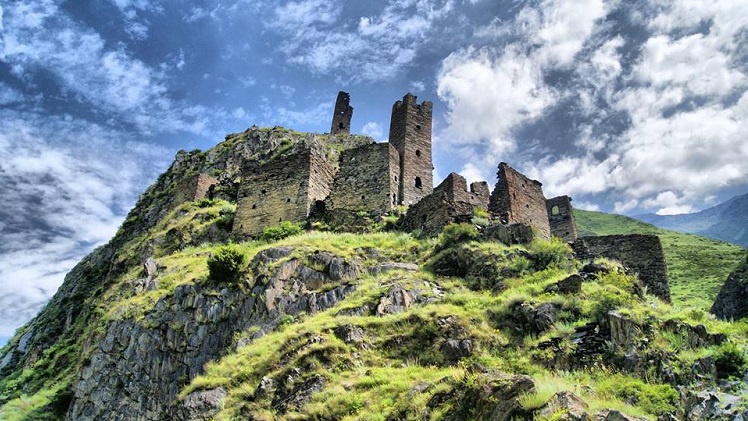Vardzia complex awarded EU's 2021 European Heritage Award for conservation

The Vardzia complex is on the UNESCO Tentative List of World Heritage and has been called "one of the most important examples of medieval heritage in Georgia" by the Europa Nostra Awards. Photo via National Agency for Cultural Heritage Preservation of Georgia.
The state project for conservation of the Vardzia Cave Complex, a 12th-13th centuries monument in Georgia's south, has been unveiled as one of the winning entries of this year's Europa Nostra/European Heritage Award, the European Union prize for cultural heritage.
Run between 2015-2019 by the National Agency for Cultural Heritage Preservation of Georgia in cooperation with the Italian National Institute for Environmental Protection and Research (ISPRA) and the Ilia State University Centre for Cultural Heritage and Environmental Studies, the project for conservation and monitoring at the site is one of nine efforts from across Europe awarded the major prize.
The reveal of the winners in a live online event saw an address from the President of the European Parliament David Sassoli in which he told the winners "[t]hrough your professionalism, your dedication, your artistic sensitivity, you have helped revitalise the Europe of today and to project it into the future."
Presenting recipients of the award in four categories - selected by a judge panel involving cultural heritage experts - the event also saw messages from Europa Nostra’s Executive President Hermann Parzinger and heads of other European cultural institutions.
@EU_Commission & @europanostra announce the
— Europa Nostra (@europanostra) May 25, 2021
2021 #EuropeanHeritageAwards/#EuropaNostraAwards!
24 Winners/18 European countries????????????
????️#Conservation
????#Research
????#DedicatedService
????️#Education #Training #AwarenessRaising
w/ the support of @europe_creativehttps://t.co/OAOcMV2zJG
In his own address, Parzinger said the recipients of the 2021 awards "powerfully demonstrate how heritage offers solutions and paths to recovery in the face of seemingly insurmountable challenges" and offered praise for "outstanding achievements" of the projects.
On the UNESCO Tentative List of World Heritage, the Vardzia monument has been called "one of the most important examples of medieval heritage in Georgia" by the Europa Nostra Awards. The 2015-2019 conservation project sought to address issues of physical integrity of the site, caused by its seismically active location.
Natural processes of the erosion of the rock the complex is cut out of, and seismic activity of the area, led to the stability of the "cave city" being threatened, leading to "numerous urgent measures" for preventing rockfall and landslides at the site between the years of the project, Europa Nostra said.
The Georgian cultural heritage agency noted a rise in visitor numbers over the recent years had also necessitated increased efforts for their safety at the location, compounding the urgency of work at the site.
See the full list of the winners of the 2021 Europa Nostra Awards
Experts from ISPRA, invited by the agency to contribute to efforts for creating a "comprehensive conservation plan", worked with their Georgian counterparts to implement measures including reinforcement of "critical" sections of the rock massif, and installation of a "complex monitoring system" that sends information on relevant environmental conditions to scientists, the agency added.
In addition, the work led to the launch of a state programme for preserving rock-hewn cultural heritage sites, which the agency said would help preserve other monuments of the type across the country, including in David Gareji, Uplistsikhe and Vani.
Dating all the way back to the second half of the 12th century, the construction of the Vardzia complex was launched under the reign of King Giorgi III and completed under Queen Tamar. The site is built across 800 metres of rock face and 50 metres of its vertical plane. The caves of the monument feature some of the best-preserved art of the era.
 Tweet
Tweet  Share
Share







